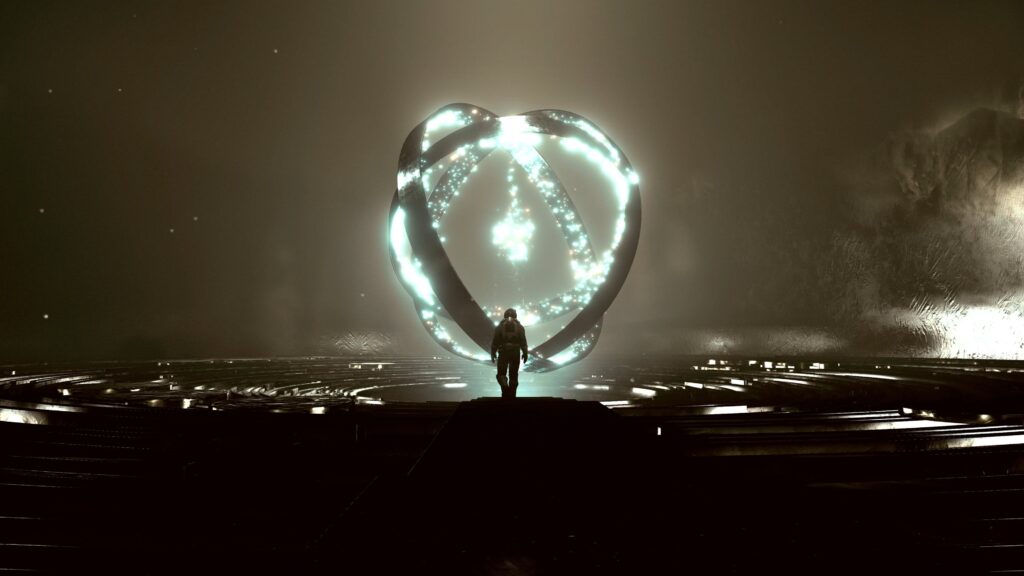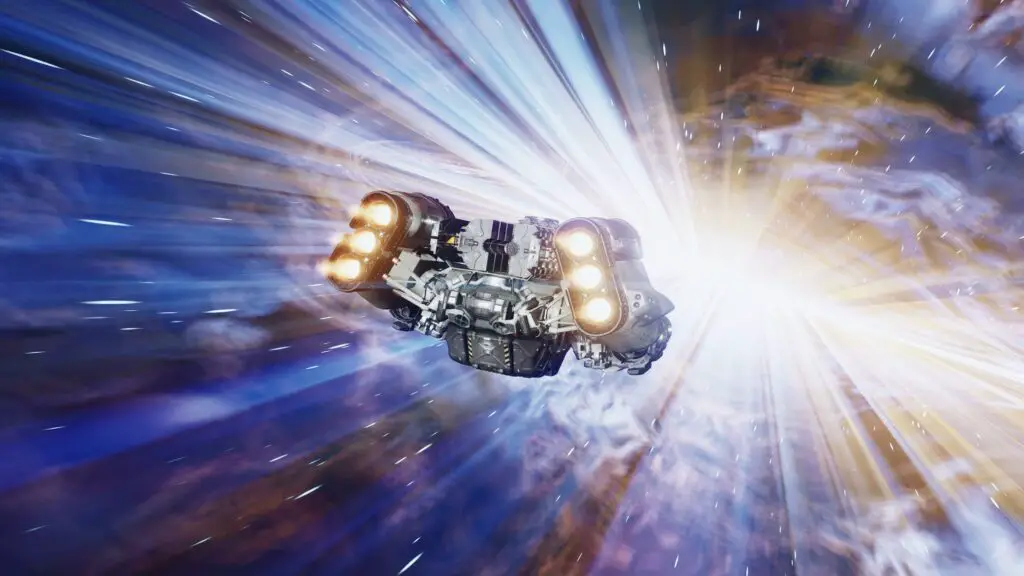My first couple of hours in Starfield gave me a feeling only a specific game can evoke. As I stepped off my ship into the city of New Atlantis for the first time and began walking its streets, I was overcome with a feeling of choice paralysis. Without meaning to — just by walking by a conversation or observing something odd that just so happened to pass into my field of vision – I was picking up leads on half a dozen optional activities to pursue.
That feeling would fade with each subsequent hour as I understood how Starfield worked. Yes, there were a ton of things to do, people to talk to, planets to visit, and even a couple of new systems to play with, but they were little more than surface level. Starfield has a few main mechanical pillars, but none of them are deep enough to stand on their own.
I walked away from my time with Starfield not dissatisfied, but certainly not impressed — it doesn’t stack up to the other landmark titles of the year in any regard. Where other games cater to very specific tastes, Starfield is more like The Cheesecake Factory. The menu might look impressive, but sacrifices quality for breadth, and nothing on it is worth ordering twice.
If you were banking on Starfield being the next revolution in WPRGs, you’ll be disappointed. If you come in expecting the next logical step in a Bethesda title, that’s exactly what you’ll get.
Starry-eyed

The main thrust of Starfield — and the organization your character joins called Constellation — is the desire to understand the unknown universe. Despite mastering space travel and colonizing planets across the universe, 2330 humans still face the same questions as today: Are we alone? What is our place in this? Our part in potentially answering those questions revolves around mysterious Artifacts that grant our character cryptic visions of … something. Constellation hopes that finding them all can finally quench that curiosity.
As high-concept as the plot likes to present itself to be, the execution is as trite as yet another story about being “the chosen one.” Nearly the entire main story revolves around tracking down an Artifact and shooting, talking, or some combination of the two in order to get it. Around the halfway point the formulaic nature almost became unbearable. Only then, for a brief moment did the story show promise and the potential to go in a unique direction. Unfortunately, Starfield failed to commit to this decision, and you’re sent right back on your scavenger hunt.
There’s also quite a lack of role-playing in this RPG. I was glad to see Bethesda abandon the Fallout 4 limitation of only four dialogue options, but in practice, every conversation boils down to the same results: you can ask questions before answering, or choose what flavor of “yes” you want to say.
What side missions and activities off the beaten path I did undertake were mostly disappointing and forgettable. Most consisted of early ‘00s-style quests of talking to someone, fast traveling to a destination to grab a thing, kill a guy, or press a button, and then going back to turn it in. Those rare ones with more going on impressed with some actually entertaining stories, like one-off sci-fi novellas in a tight package. Starfield would’ve been better served highlighting these and cutting back on the busy work.
What’s old is new again

Despite being a new IP, just about everything in Starfield is traditional Bethesda design. Anything not nailed down can be picked up, conversations lock you into a zoomed-in monologue where you pick from a few dialogue choices, and you will find optional quests around every corner. It’s the definition of evolution, not revolution.
Combat initially impressed the most out of Starfield’s systems, though that sheen quickly wore off. Guns look and sound serviceable, but the fights themselves were nearly identical from start to finish. There is a Dragon Shout equivalent you get during the main story that adds a bit of variety to how you approach gunfights, but your opposition remains almost completely stagnant for the duration.
Persuasion also falls into that trap, only ends up feeling less satisfying. When speaking to certain characters you may have the option to try and talk your way through a scenario. You accomplish this by picking dialogue choices just like a normal conversation, but each with a point value. The more points a line is worth, the more difficult it is for it to work, and you have three rounds to reach a certain threshold to persuade said character. The main problem is that, aside from the vague green, orange, and red color coding to tell you which are more difficult to select, you have no idea what chances you have of any choice succeeding. Even replaying the same conversation and picking the same options didn’t result in the same outcome, so there’s no strategy in trying to pick options based on who you’re talking to. That feeling of randomness sucks and enjoyment out of success or desire to do better if you fail.
What is more satisfying is how Bethesda has mixed elements from their prior games into Starfield’s leveling system. You gain XP as you would expect — complete quests, kill enemies, discover new locations, etc. — and earn skill points. The wrinkle is that every skill you have comes with challenges associated with them, such as using pistols to kill X number of enemies for your Pistol proficiency skill. When you complete a challenge, you can invest another point into that skill to raise its potency and unlock the next challenge. This can be repeated up to four times, adding a great layer of choice between investing deeper into your existing skills or unlocking new ones.
All systems go

With any other studio it wouldn’t be a point to say that the game had few bugs, but considering Bethesda’s reputation it does warrant mentioning that Starfield is quite solid on release. It isn’t without issue, but the only ones I experienced related to multiple dialogues playing overtop one another and characters not appearing where they should during conversations. I had no crashes, gameplay glitches, or any technical hiccups during my time.
What could use some work is the UI and quality of life features. Between talking and fighting, you’ll be doing a ton of looting in Starfield and attempting to balance your inventory constantly. While you won’t have trouble finding what you’re looking for within your own stash, the Starfield lacks the smooth conveniences modern games have made us accustomed to.
Purchasing weapons, for example, only lets you compare what you’re buying to what you currently have equipped, which might not be the weapon you’re looking to replace. If you want to buy ammo, you better memorize or write down which types you need because the shop won’t differentiate which you can use or not. Buying new suits and helmets doesn’t give you the option to equip and sell your old gear in that menu, and so on.
One small step
Anyone who has played a Bethesda RPG in the last decade already knows whether or not they will like Starfield. With the main drawback of no longer offering a single open world to explore, this is the most predictable next step for the studio, for better and worse. If you’re new to the studio, you will also have a good time seeing the sights, but be prepared for that sheen to wear off. With a lackluster main plot and a wide range of mechanics that don’t evolve or have enough depth, you will probably end up bouncing between the features you like until you get bored of them and you’re ready to put the game down for good.
You won’t feel like you wasted your time with Starfield, but it isn’t a game that offers anything truly revolutionary.
The Review
PROS
- Interesting and rewarding leveling system
- Strong characters
- Some great side quests
CONS
- Combat fails to evolve
- Sacrifices depth for breadth in gameplay mechanics
- Clunky UI and missing quality of life features






